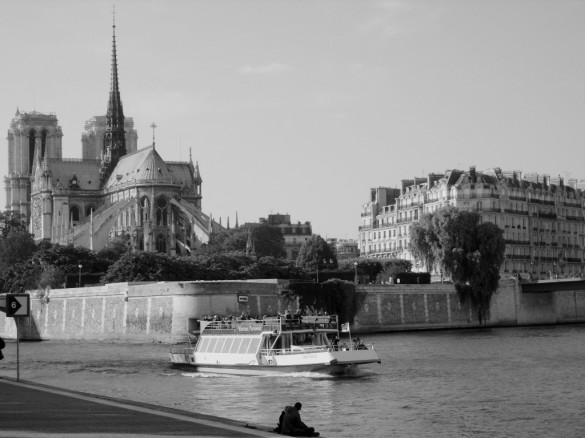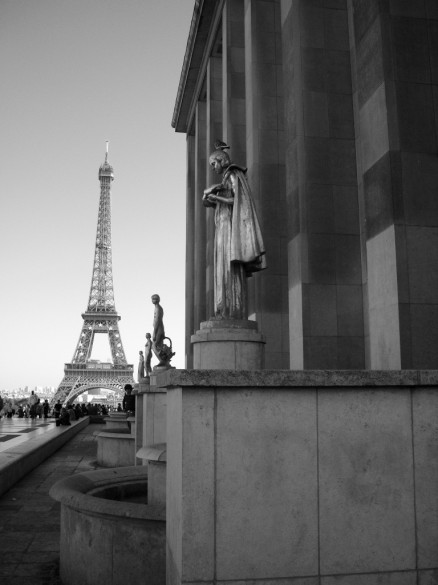Ask anybody who has never been to Europe which foreign city they would most love to visit, and you can be almost sure that the answer will be: Paris. Paris is the most visited city on earth, the world’s favourite travel destination. But have you ever wondered why and how Paris got there?
Sure, there is the city’s long and rich history, the museums and all. But Istanbul, Cairo and Jerusalem have longer and even more varied histories – and museums full of ancient stuff as well.

Okay, Paris has a large number of beautiful buildings. But so do Cracow and Prague – actually, both of them beat Paris hands down in this respect, and where’s the rush?
Yes, I hear you say, but Paris is also a place where many different cultures meet in interesting and fascinating ways. Well, this is true – but even more so for Marseille. Never mind the Parisian suburb of Saint Denis, where teenagers from many different cultures meet every Saturday night in the streets to set stolen cars ablaze. So what are you waiting for: book your St Valentine’s Day weekend trip to Saint Denis NOW.
In fact, none of these places can rival Paris for the same reasons that help Coke to outsell all other brands of soft drinks. They may have the flavour, but not the PR. Paris owns a monopoly on the market for elegance, glamour and sophistication: people want to visit Paris for the same reason that they may want to purchase expensively advertised cologne – in the hope that some of that elegance, glamour and sophistication will rub off on them.
But how did Paris manage to acquire this image as the global capital for the good life: for elegant dresses and discourse, artistic excellence and sophisticated tastes? How did it turn into the luxury brand among travel destinations? Many people probably believe that it took several centuries to build up this brand, but this is only partly true and wholly misleading.
Paris’s current standing as the global capital for elegant sophistication is, in fact, of a fairly recent vintage and dates back to the period immediately after WWII, when – with much of the world lying in ruins – Paris was just about the only candidate. In many ways it was, almost literally, the last town standing.
 Tony Judt writes in “Postwar”:
Tony Judt writes in “Postwar”:
There could only be one place for a properly European intellectual life in the years after WWII: only one city, one national capital whose obsessions and divisions could both reflect and define the cultural condition of the continent as a whole. Its competitors were imprisoned, had destroyed themselves or were parochially absorbed. Ever since the 1920s, as one European state after another fell to the dictators, political refugees and international exiles had headed for France. Some had remained during the war and joined the Resistance, some had escaped to London, New York or Latin America but would return after the Liberation.
The result was that, for the first time since the 1840s, France was once again the European home of the disinherited intellectual, a clearing house for modern European thoughts and politics. Post-war Parisian intellectual life was therefore doubly cosmopolitan: men and women from all over Europe partook of it – and it was the only European stage on which local opinions and disputes were magnified and transmitted to a wide, international audience.
And so, French culture became once again the centre of international attention: French intellectuals acquired a special international significance as spokesmen for the age, and the tenor of French political arguments epitomized the ideological rent in the world at large. Once more – and for the last time – Paris was the capital of Europe.
And with Asia not yet on the scene and America still unsure over the exact terms of its engagement with the wider world, this meant pretty much: the cultural capital of the world.
France had escaped devastation – her reward for becoming a reasonably cooperative and pliable ally of Nazi Germany following her devastatingly quick defeat in the summer of 1940. Paris’s last great triumph was therefore the direct outcome of the greatest humiliation in the entire history of la grande nation. Who says that history doesn’t do irony?
Ultimately, this allowed Paris to become a part of the mental landscape of the first postwar generation in the US and elsewhere – as a metaphor for the richness of life beyond the outer limits of suburbia, a place of exotic allure and longing: where a young person could find real adventure, not least of an erotic kind, where men knew how to treat a lady and where the girls were not only beautiful but also liberated. (And if their pop music wasn’t quite as catchy as ours, and their films a good deal more incoherent, this was because Brel, Brassens and Godard had so much smarter and more profound things to say.)
But that was then. What about now? Baby Boomer visitors still fill the streets of Paris, searching the echoes of their teenage dreams, while the generation of today’s 30-year-olds, the grandchildren of the Baby Boom, have absorbed the brand image of Paris as part of their general education. Younger people, however, the teenagers of today, see Paris in a different way. For them, I suspect, Paris is just one European capital among many – prettier than most, probably, but also more formal and sedate. A bit staid, not particularly exciting and, whisper it, a city for old folks.
If you asked these teenagers which foreign city they would most love to visit, they would, almost certainly, not answer “Paris” with the same degree of unanimity as their forebears.
But what is the city of their dreams? They would probably just shrug. Dream cities, it seems, are no longer needed. Or is it because today’s young people have merely forgotten how to dream?
Michael Schuermann worked as a journalist for more than twenty years, initially for the BBC in London and later for the European Sports Network (former ESPN’s European affiliate), then in Paris (for another sports channel) where he has lived since 1993. He’s the author of guide book Paris Movie Walks – 10 Guided Walking Tours in the City of Lights! Camera! Action! and now blogs as Easy Hiker.